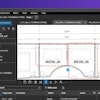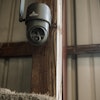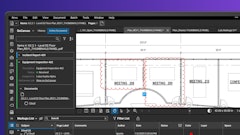Key Performance Indicator, most commonly seen as KPI, is the hottest buzzword in corporate America right now. For once the big shots got a buzzword right.
It's easy to see why KPI is gaining such rapid adoption among the business masses. The term speaks so clearly and crisply. Its meaning so obvious. Its appeal so instinctive.
- Key = important
- Performance = progress towards success
- Indicator = measurement feedback
Why KPIs Are Vitally Important
You are faced with dozens of potential performance indicators but do you know which ones really matter? Do you know which set, if on target, will virtually guarantee your future will be successful? Failure to track and monitor a key performance item almost always leads to distasteful results.
One of the great benefits of KPIs is they provide tremendous motivation to take action when one or more things is trending wrong. The message is clear and unmistakable. If action isn't taken to reverse the trend, future results are going to be poor. You can stick your head in the sand and accept your fate OR you can dive in and fix the problem before it threatens your profitability.
A Dashboard Full of KPIs
Dashboards are very important. They enable the viewer to understand performance with a quick glance. Well designed dashboards function like the dashboard on a Sprint Cup car.
All gauges are arranged so that when their arrow points straight up, everything's good.
Let's take a moment to consider your car's dashboard. It contains several gauges that tell you how well your car is running. Your dashboard probably provides the following
feedback.
- Odometer: tells you how far you've gone since the beginning
- Speedometer: tells you how fast you are moving forwards
- Tachometer: tells you how fast your engine is turning over
- Trip Odometer: tells you how far you've gone since re-stocking your tank
- Gas gauge: tells you how much capacity for progress you have left in your tank
- Temperature gauge: tells you whether your engine is overheating and heading for a breakdown
- Oil pressure gauge: tells you when your engine is about to freeze up
- High beams: tells you that you are looking far out into the future
- Check engine light: tells you your car needs to go in for a checkup
- Turn signal: tells you that you have told the world you are getting ready to change direction
When one of your gauges starts indicating something is wrong, you'd best get to a mechanic before you find yourself broken down late at night on a backwoods road - without cell service.
Your dashboard's readouts are usually referred to as gauges. Maybe we should stop calling them gauges and start calling them KPIs? Just like with your car, you need to keep a close eye on your business' KPIs.
Here is a list of KPIs that might apply to your operation:
- Sales backlog
- Number of estimates/proposals outstanding
- Gross margin
- Overhead variance against budget
- Indirect labor hours
- Aged accounts receivables
- Payables to cash on hand
- Production per man-hours
- Cost per man-hour
- Revenue per man-hour
- Gross profit per man-hour
- Debt-to-equity ratio
- % on-time completion
- % in-budget completion
- Over-billings / under-billings
- Actual direct costs vs projected direct costs
- Monthly sales vs budget
That's quite a list of possible KPIs and it's not complete. Creating a list of candidate KPIs is the first step in creating your dashboard. The second step is narrowing the list down to the critical few.
You need to figure out the five to seven KPIs that virtually guarantee business success should you do well on them. Don't rush this step. Gather feedback. Research the Web (our association site is a great place to start: www.USCTCA.com).
Once you have your short list of KPIs, it will be time to create your dashboard. How to do that is even more complicated that identifying your KPIs. You have several options for displaying KPI status. Your choice depends on what types of data presentation works best for you. Do pie charts speak to you? How about bar charts? Run charts? Pivot tables? Look around the Internet for samples and you'll find a style that speaks clearest to you. Personally, I like pivot tables. Most business owners I've known prefer pie charts or bar charts.
Once you know how you want your KPIs presented, work with your office manager or a software pro advisor to build and populate the underlying pieces. Most likely you will need to revise you existing data collection procedures. As an engineer friend who worked on a manufacturing process once told me; when you know what data you really need you will discover all the data you collected prior to that time will be useless.
If you don't have a dashboard showing your KPIs give us a call. We will help you get one put in place.



















